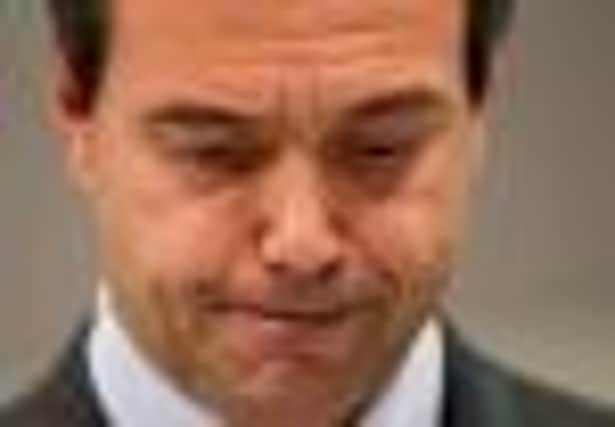PPI claims send Lloyds spiralling into the red by £3.9bn


The loss was largely triggered by a £3.2bn provision to cover mis‑selling of payment protection insurance (PPI), which was one of the first actions of new chief executive Antonio Horta‑Osorio earlier this year.
However, the Portuguese banker stunned the markets last week when he went on sick leave suffering from stress and fatigue, the bank repeating yesterday that he is due to return by the end of the year despite growing scepticism in the Square Mile.
Advertisement
Hide AdAdvertisement
Hide AdUnderlying pre‑tax profits at Lloyds fell 25 per cent to £644 million in the three months to the end of September from £855m.
Tim Tookey, the bank’s outgoing finance director who is standing in for Horta‑Osorio as chief executive, said the faltering economy and low interest rates meant the bank could miss its medium‑term targets.
“Economic circumstances are becoming more uncertain,” Tookey said.
Tookey said when Horta‑Osorio announced the results of his strategic review in June the board expected a base rate rise by the end of 2011, but many commentators now believed there would not even be a rise next year.
Banks find it harder to make profits when interest rates remain low because their profit margins are pushed down.
Tookey said if current economic conditions persisted the attainment of financial income targets “may be delayed to beyond 2014”.
The stand‑in chief executive deflected questions about Horta‑Osorio’s health and whether he would return to the board. Tookey, who is due to join Friends Life early next year, said he saw his job as maintaining the momentum of Lloyds.
“That means we can give the business back to Antonio in a good condition,” he added.
Advertisement
Hide AdAdvertisement
Hide AdLloyds benefited from a “significant reduction” in charges for sour loans, which fell to £2bn in the third quarter from £2.8bn in the previous quarter.
The bigger-than-expected quarterly fall meant loan impairment charges in the first nine months were down 22 per cent at £7.4bn compared with a year ago. As the economy stuttered, the bank’s total income was down 9 per to £16.1bn in the first nine months of the year.
Tookey said Lloyds was closely monitoring the economic turmoil in the eurozone, with fears growing over Italy. It cut its exposure to Italian banks by a third to £1.2bn in the third quarter. It also trimmed its exposure to banks in Spain, Portugal and Ireland.
“We’re watching the general eurozone situation with a lot of caution,” Tookey said.
Lloyds, 43 per cent owned by the government, saw its exposure to banks and asset-backed securities in Belgium, Greece, Ireland, Italy, Portugal and Spain fall to £5.3bn at the end of September, against £6.2bn at the end of June. It holds barely any sovereign debt for those countries.
Tookey repeated that the talks to sell 632 branches at the behest of the European Union were ongoing but a possible flotation of the business, codenamed Verde, could also not be ruled out.
Paul Mumford at Cavendish Asset Management said on the whole, the results were “a bit of a relief”.
“Compensation for PPI claims was always going to eat heavily into profits, but this headline detracts from a slow and steady underlying recovery story,” he added.